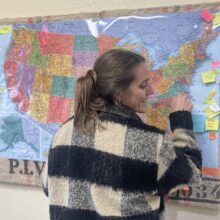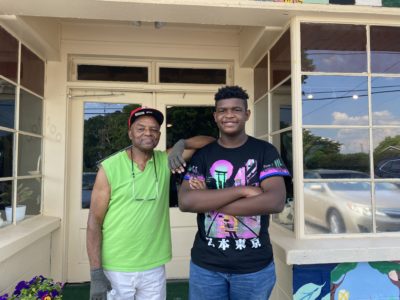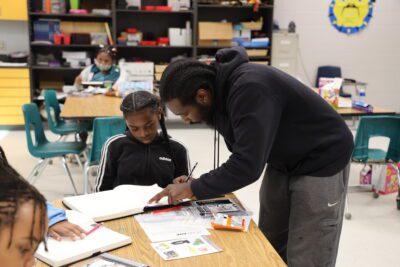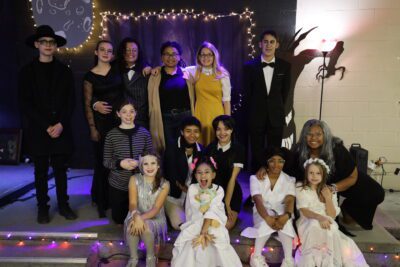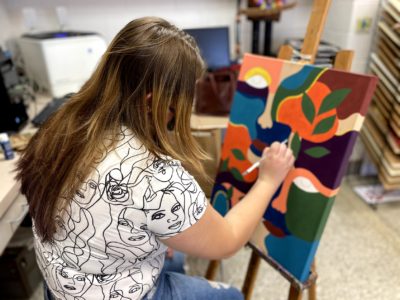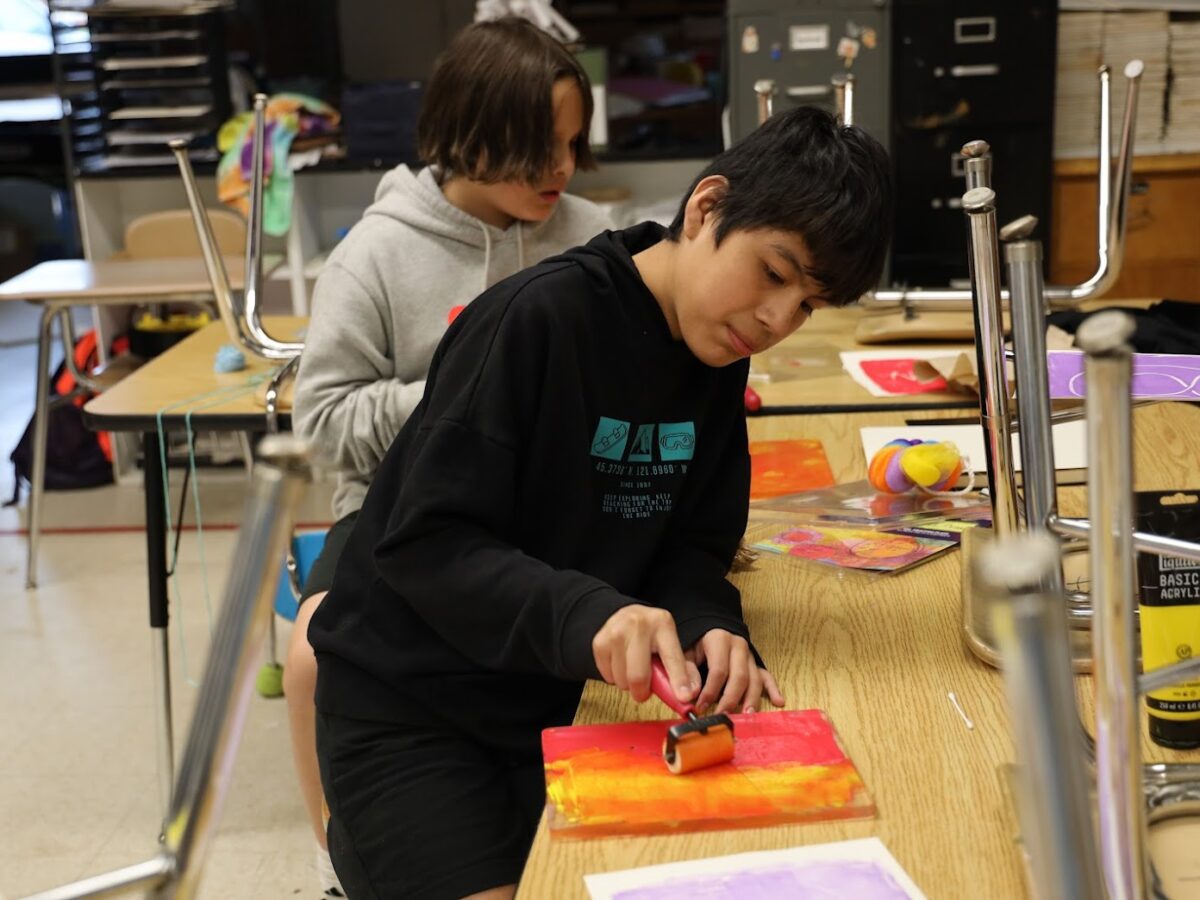

|
|
At West Iredell Middle School, a burgeoning artist approaches the front of the class to check out what treasures await inside a miscellaneous grab bag from the Dollar General store.
Regional professional artist Maria Velez Campagna has brought a slew of mystery supplies to accompany the day’s project, which also involves gelli plates, brayer rollers, dollops of paint, and piles of magazines.
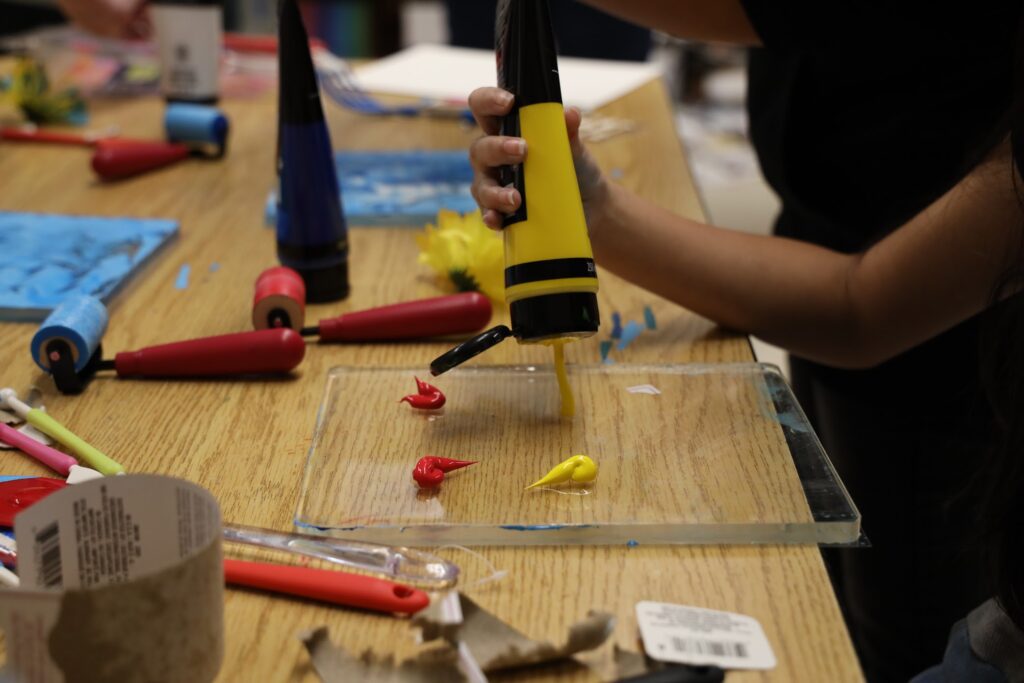

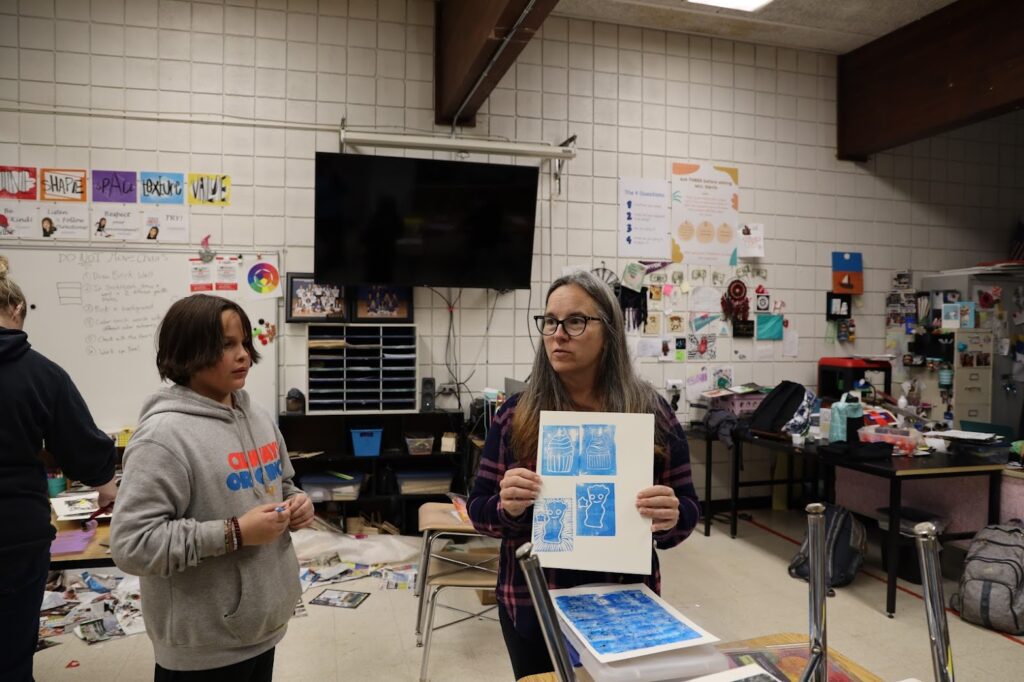

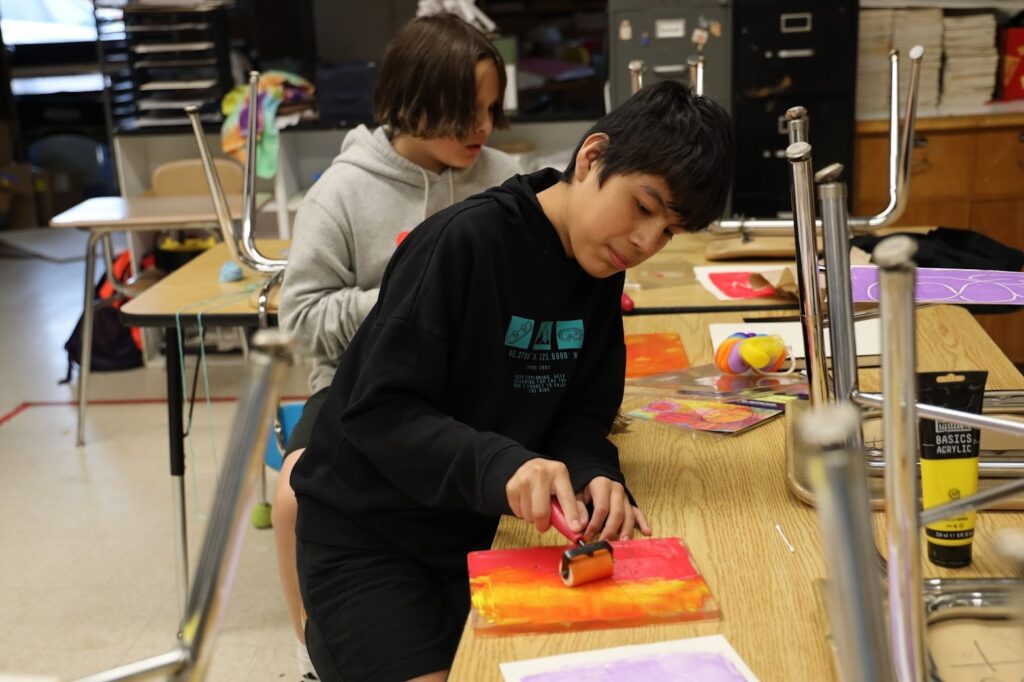

Campagna is leading the after-school Artist Innovation Mentorship (AIM) class at West Iredell along with the school’s art educator Jennifer Harris. For a couple of weeks, the focus is on print making.
Before students began working with this method of monoprint making, they were learning the technique of subtractive sculpture with Speedy-Carve linoleum blocks.
“When you’re working with carvings, that is very precise, it has to be planned out. It’s a lot for their little minds,” said Campagna.
With the subtractive method, the young artists removed material to create their desired look, but today they do the opposite. Campagna believes this type of printmaking is more free-form — students may go in with a preconceived notion of how the print will turn out, but in the end, it may be even better than they thought.
She loves being able to see, “That ‘aha moment’ like, ‘Oh my gosh!'”
“That’s what I really enjoy about this process,” she said.
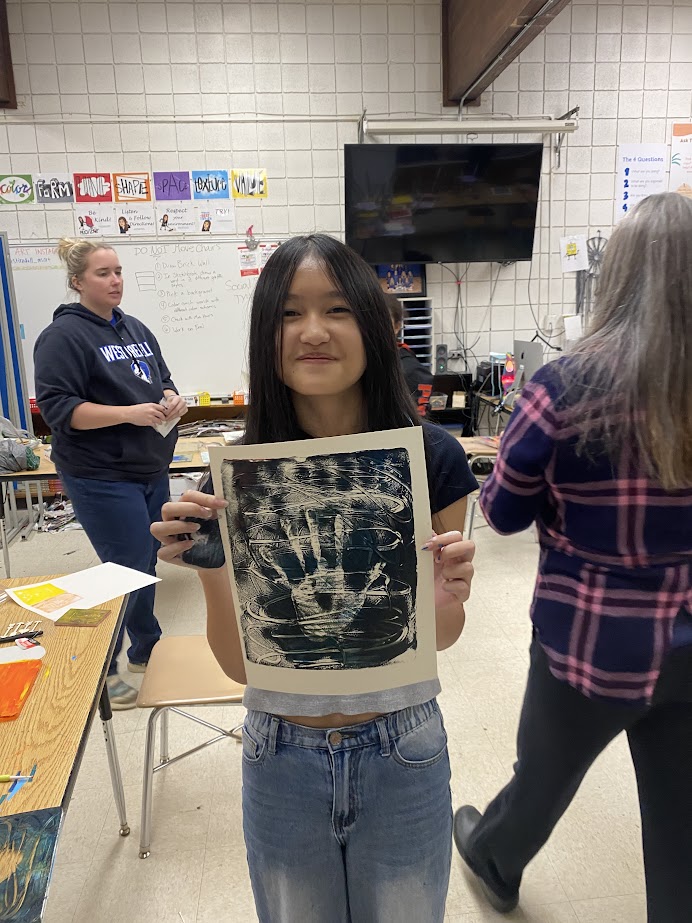

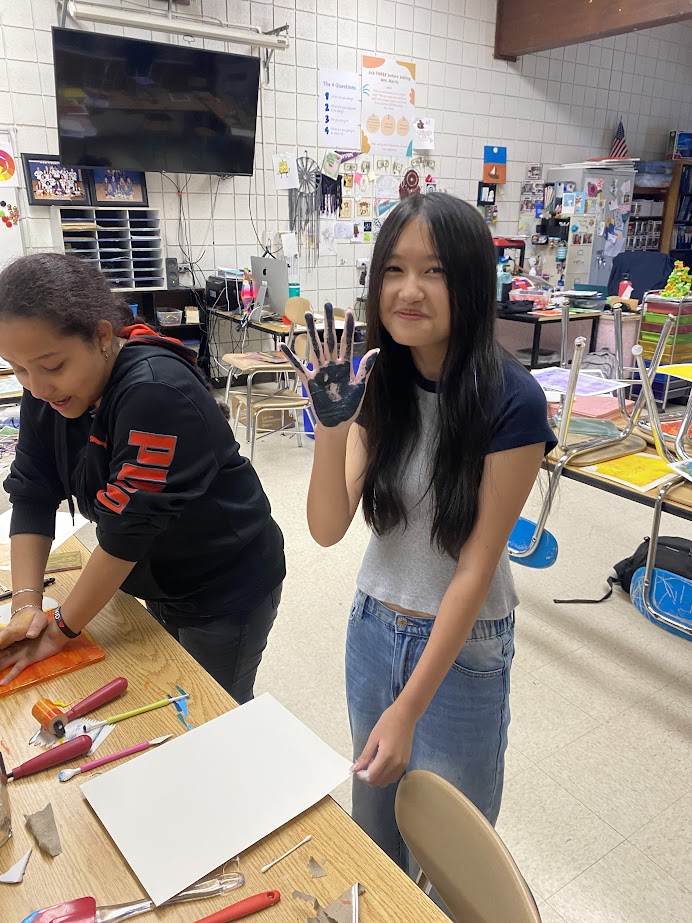

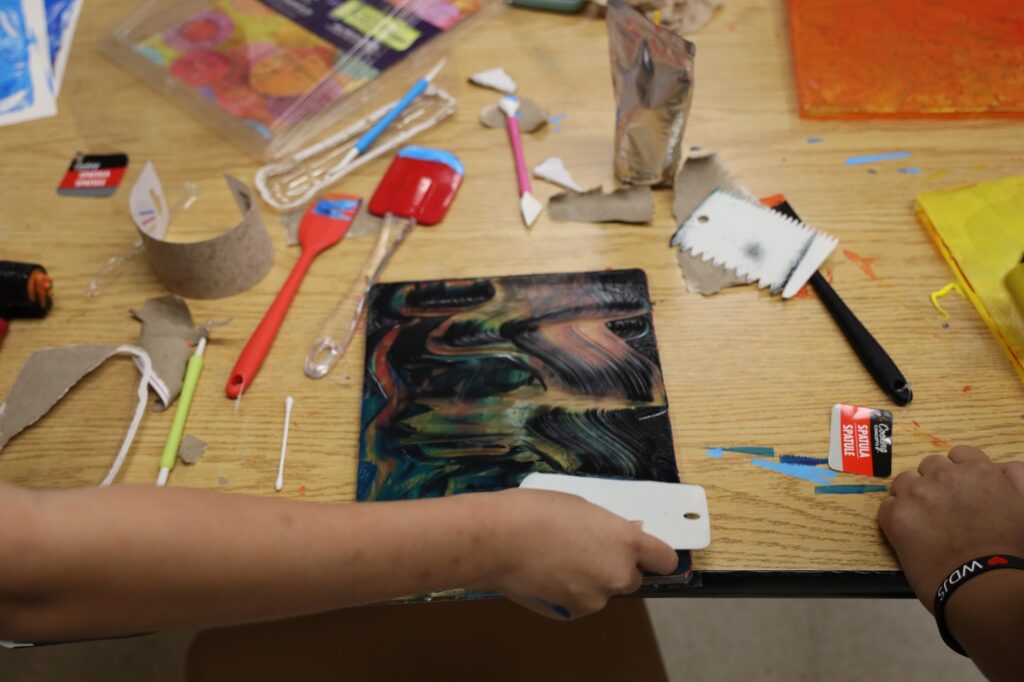

This project combines both ideas of additive and subtractive methods in printmaking, as students roll paint on their gelli plates, then use their hands or those special materials Campagna brought in to remove paint.
What Campagna likes about using the gelli plates is that everyone is successful no matter what they do, and in this classroom, the more prints, the better.
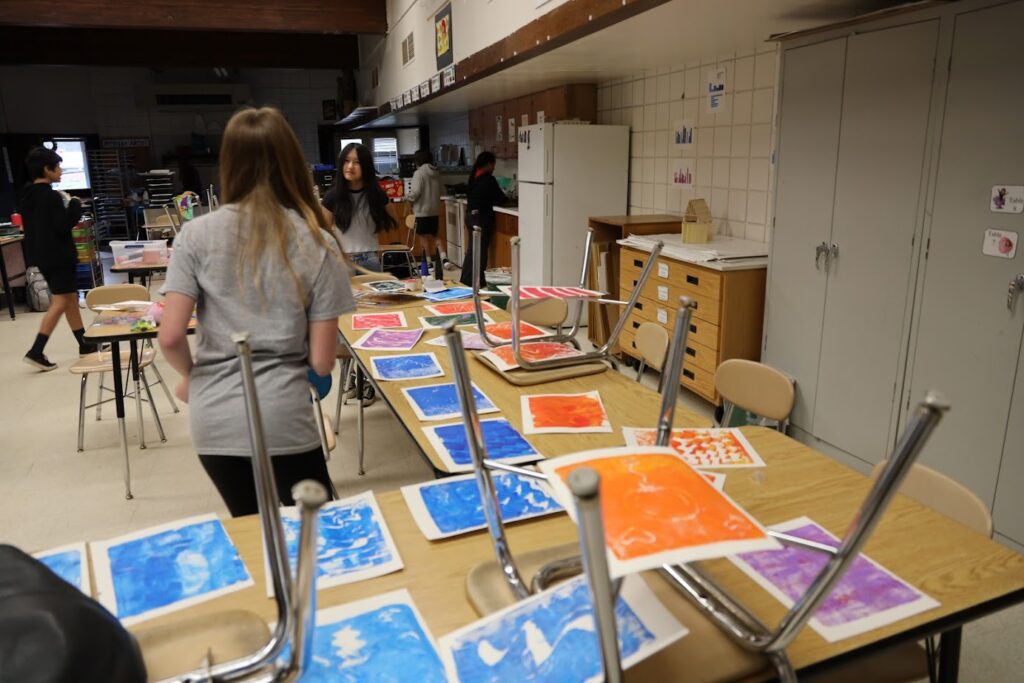

Campagna has been a practicing artist for well over a decade in the region and currently works for the town of Mooresville as a visual art instructor. Any time there is a community event, she tries to bring in art elements or activities for people to participate in.
Harris is thankful for AIM because along with bringing in Campagna, the program funds more supplies for her classroom that she can use during regular school hours. An outreach program out of the North Carolina Museum of Art (NCMA), AIM started in 2022. In its inaugural year, the program supported eight artist residencies in seven counties across eastern North Carolina. Now in its third year, AIM has reached almost 600 students in 19 counties statewide. This is the program’s first year at West Iredell.
According to the NCMA, pilot funding for the program was provided by the Anonymous Trust and the N.C. Department of Natural and Cultural Resources, with additional support from First Citizens Bank and the William R. Kenan, Jr. Charitable Trust.
Along with expanding the AIM program to more places, NCMA continues to create ways students can engage in art enrichment activities regardless of location.
How can the museum reach more students, and expand access to the art hanging in Raleigh? Enter the series, Broad Strokes/Fine Lines.
Broad strokes and fine lines
In an effort to increase art exposure for our state’s more rural students, the NCMA created a series of AIM artist videos entitled Broad Stroke/Fine Lines. Artists in the program talk through artwork found at the museum’s People’s Collection, each taking a look through a different lens discussing the who, what, where, when, and how.
Artists representing Cumberland, Union, Wake, and Washington counties contemplate themes of place, space, time, and identity. How can art tell a story? Each artists brings their unique experiences and talent within their preferred medium to the screen, while exploring what the museum has to offer.
The videos hope to inspire students to continue to create, as they can look back and appreciate what has been done before. All videos in the series can be found below or on the NCMA’s YouTube page.
Who Are We? Identity in Art with Alexandria Clay
Explore portraiture with Alexandria Clay as she looks at the pictures of people made by artists across the collection and creates a self-portrait in her own style with charcoal and water.
What Is That? Abstraction in Art with Jimmie Sutton
Have you ever wondered what you are looking at when you view an abstract painting? Jimmie Sutton explains that there are many ways to make and understand abstract paintings as he paints a fun and fast one for you.
When Was That? Time and Space in Art with Ryan Cureton
Are you a fan of ancient Egyptian or other types of ancient art? Ryan Cureton explains how art made thousands of years ago shows up in his contemporary pieces through his woodworking and Ancient Urban practice.
Where Are We? Place in Art with Jimmie Sutton
Artists have been painting landscapes for hundreds of years, capturing natural and constructed scenes, reminding us to stop and take in our surroundings, and noticing what makes a place memorable. Jimmie Sutton takes us through the painting of a simple landscape with some great advice about trusting the process and learning to see what happens when you have fun with paint.
How Did They Do That? Process in Art with Rebecca Wolf
Have you ever looked at something and wondered, “How did someone make that?” Rebecca Wolf looks at artworks throughout the museum that make her curious and interested in learning more about the “how” of artists’ creations. Follow along for a fun mixed-media printmaking exercise that teaches us that we can make beautiful mistakes that might become our favorite pieces.
Editor’s Note: EducationNC is supported by the Anonymous Trust.
